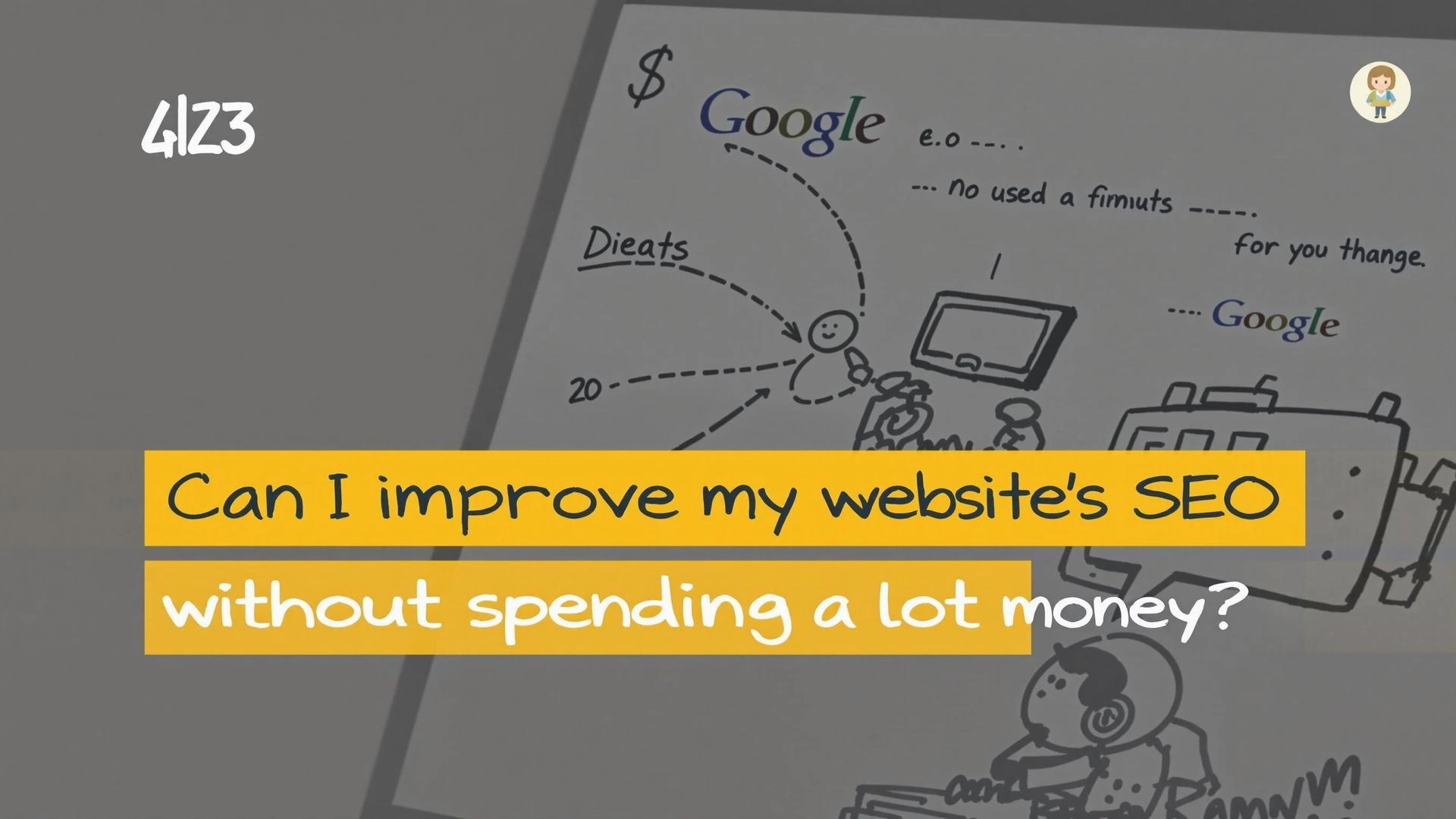Imagine you’ve just launched your brand-new website. It’s sleek, professional, and the perfect showcase for your small business or startup. But here’s the kicker: no one can find it. It’s like throwing a grand opening party and forgetting to invite guests. So, how do you get your website on AI search engines and in front of eager customers? If you’re feeling overwhelmed by the technical side of things, don’t worry. Today we’re diving into user-friendly strategies to ensure your online presence shines brightly where it matters most—search engines like Google.
Key Takeaways
- Use the right keywords to align with your customers’ search habits and attract more traffic to your site.
- Create high-quality, purpose-driven content that addresses customer questions and positions your website as a valuable resource.
- Optimize your website with on-page SEO, including unique title tags, meta descriptions, and natural keyword usage to boost visibility.
- Use schema markup to help search engines better understand your site and enhance its appearance in search results with rich snippets.
- Ensure your website is mobile-friendly to improve user experience and your rankings on search engines.
- Build credible backlinks by collaborating with reputable websites to boost your site’s credibility and authority.
- Remember, SEO is a long-term strategy that requires consistency and patience to achieve significant improvements over time.
- Visit our FAQ for more information.
1. The Keyword Magic Trick
Think of keywords as the secret handshake that gets your website into the search engine club. They’re the words potential customers type when they’re desperate for your services. Start by crafting a list of keywords and phrases related to your business. Use tools like Google’s Keyword Planner or just brainstorm the words your ideal customer might use. It’s all about speaking your audience’s language, literally.
2. Crafting Content with Purpose
Content is still king, and it’s time to let yours rule the kingdom. Consider your website as the ultimate business card; it needs information-rich content that answers your customers’ most pressing questions. Whether you’re a landscaper explaining seasonal plant care or a tattoo artist describing the intricacies of design, content that resonates and informs can elevate your website’s visibility.
3. On-Page SEO: Your Website’s Best Friend
SEO isn’t an esoteric branch of technology reserved for the digital elite. It’s simply about being smart and intentional about details. Ensure each page on your site has a unique title tag and meta description. These are like little love notes to search engines, telling them exactly what each page is about. And don’t forget to pepper in your keywords naturally. Remember, this is about clarity, not keyword stuffing. Read more about local seo for small business here.
4. Using Schema Markup to Boost Visibility
Schema markup is like a cheat code for search engines. It’s a type of structured data that helps search engines understand your website content better. By adding schema, you can highlight important details such as your business hours, contact information, customer reviews, or even product details. Tools like Google’s Structured Data Markup Helper make it easy to implement. Plus, schema can enhance your search result listings with rich snippets, making your site more attractive to users.
5. Mobile-Friendliness Matters More Than Ever
In today’s fast-paced world, people are constantly on the move, searching for services from their mobile devices. Make sure your website is mobile-friendly. This not only improves user experience but can significantly boost your ranking on search engines. A mobile-friendly site is like a warm handshake—inviting and worth coming back for.
6. Networking for the Digital Age: Backlinks
Just like networking in person, the more your website is associated with reputable, related sites, the more trusted it becomes. Reach out for guest blogging opportunities or collaborations with businesses that complement yours. These backlinks are more than just digital high-fives; they’re a validation, telling search engines that your site is a credible source.
Putting this into Practice
Here’s a video I made showing What’s coming next in the world of SEO – AI Optimization or “AEO” (Read the full AI Optimization post here):
Frequently Asked Questions
tart by thinking about what your ideal customer would search for when looking for your services. Tools like Google’s Keyword Planner or even a simple brainstorming session can help. Focus on keywords that are relevant to your business and reflect what customers actually need.
On-page SEO involves optimizing individual web pages to rank higher on search engines. This includes using unique title tags, meta descriptions, and naturally incorporating keywords. These elements help search engines understand your content and improve your site’s visibility in search results.
Content is the foundation of SEO. High-quality, informative content answers your customers’ questions, builds trust, and keeps visitors engaged. Search engines reward websites with useful, relevant content by ranking them higher in search results.
Schema markup is structured data that helps search engines understand your website’s content better. It can highlight details like business hours, services, or customer reviews. While it’s not mandatory, schema markup can improve how your site appears in search results, often displaying as rich snippets that attract more clicks.
Test your website using tools like Google’s Mobile-Friendly Test. Make sure your site loads quickly, is easy to navigate on smaller screens, and adjusts properly to different devices. Mobile-friendliness is not just about usability; it also significantly affects your search engine rankings.
Backlinks are links from other websites to yours, acting as a vote of confidence in your content. They tell search engines that your website is credible and valuable. You can earn backlinks by guest blogging, collaborating with other businesses, or creating shareable, high-quality content.
Title tags and meta descriptions are snippets of text that describe your web pages to search engines and users. They influence how your website appears in search results and play a big role in encouraging users to click on your links.
Yes! Many effective SEO strategies, such as optimizing keywords, writing quality content, and using free tools like Google Search Console, are budget-friendly. With consistent effort, you can improve your website’s visibility without breaking the bank.
Start with the basics: optimize your keywords, create high-quality content, and ensure your website is mobile-friendly. Adding schema markup and building backlinks can come next, as they provide additional boosts to your site’s visibility.
SEO is a long-term strategy. While you might notice small improvements in a few weeks, significant changes often take 3-6 months or more. Consistency and patience are key to achieving and maintaining higher rankings.
Getting your website to rank on search engines doesn’t have to be a daunting task. By incorporating these straightforward strategies, you’ll enhance your online presence significantly.
Ready to take the plunge?
Remember, a thriving online presence starts with a few deliberate steps today.
Call me at: 631.903.2042
and I’ll help you get started.
- AI vs. Traditional SEO: Key Differences and How to Adapt
- Boosting Your Home Business: Essential SEO Tips for Success
- AI Optimization for Websites: How Hassle Free Websites Appears in Bing Copilot
- The Small Business Owners Guide to the AI Search Revolution
- Step-by-Step: How to Optimize a Website for AI Search Engines
- Web Design Long Island







